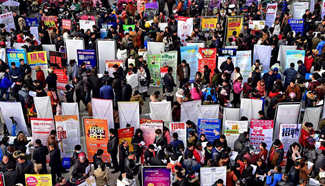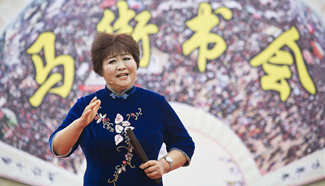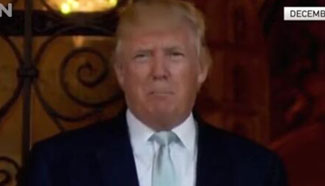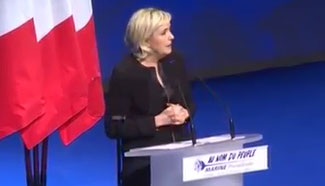BEIJING, Feb. 7 (Xinhua) -- China's forex reserves fell below 3 trillion U.S. dollars in January, but only after action to stem the outflow.
Forex reserves stood at about 2.99 trillion U.S. dollars last month, down from about 3.01 trillion U.S. dollars in December, the seventh sequential monthly contraction, the State Administration of Foreign Exchange (SAFE) said on Tuesday.
The SAFE attributed the decline to intervention to maintain equilibrium. In addition, many Chinese people travel abroad during the lunar New Year holiday, which fell in January this year, prompting higher demand for foreign exchange.
The persistent decline of China's forex reserves has caused widespread concern about the country's overall financial stability, as the diminishing stockpile, still the world's largest, is perceived as shielding the economy from currency and foreign trade volatility.
The 3 trillion U.S. dollars safety mark was dismissed by the SAFE on Tuesday, describing the stockpile as "abundant."
The SAFE said it was "normal" for forex reserves to fluctuate in light of complicated domestic and overseas economic environments.
The contraction was 87.2 billion U.S. dollars less than last January and 28.8 billion U.S. dollars less than in December.
The administration predicted that capital would flow in a balanced manner across the border in the near future.
"As China maintains medium-to-high economic growth, a current account surplus, sound fiscal conditions and a stable financial system, these factors will continue to support the yuan's position as a stable, strong currency. It will also keep forex reserves at a reasonable and abundant level," it said.
The yuan weakened against the U.S. dollar in 2016 as a strong U.S. economic recovery and expectations of more U.S. interest rate hikes supported the U.S. currency.
To prevent the yuan from weakening too far and prompting more capital outflow, China's central bank sold a considerable amount of U.S. dollars to prop up the yuan.
It also tightened regulations by asking those who want to buy large amounts of foreign currency to specify their purpose and provide additional information.
China's GDP grew 6.7 percent year on year in 2016, lowest reading in nearly three decades, but within the government's target range.
To prevent the economy from being falsely propped up by easy credit, the authority can tighten monetary policy to rein in asset bubbles at any time, which explains why the yuan was not allowed to depreciate further and why short-term interbank rates were raised.
In January, the yuan appreciated at an annualized pace of about 16 percent. Bloomberg economist Tom Orlik said in a research note that it notified the markets that two-way movement in the exchange rate is a reality.
While fluctuations will continue, the yuan will be basically stable as the economy improves, the financial market opens up and current monetary policy remains in place, according to the China Foreign Exchange Trade System (CFETS) website on Tuesday.














